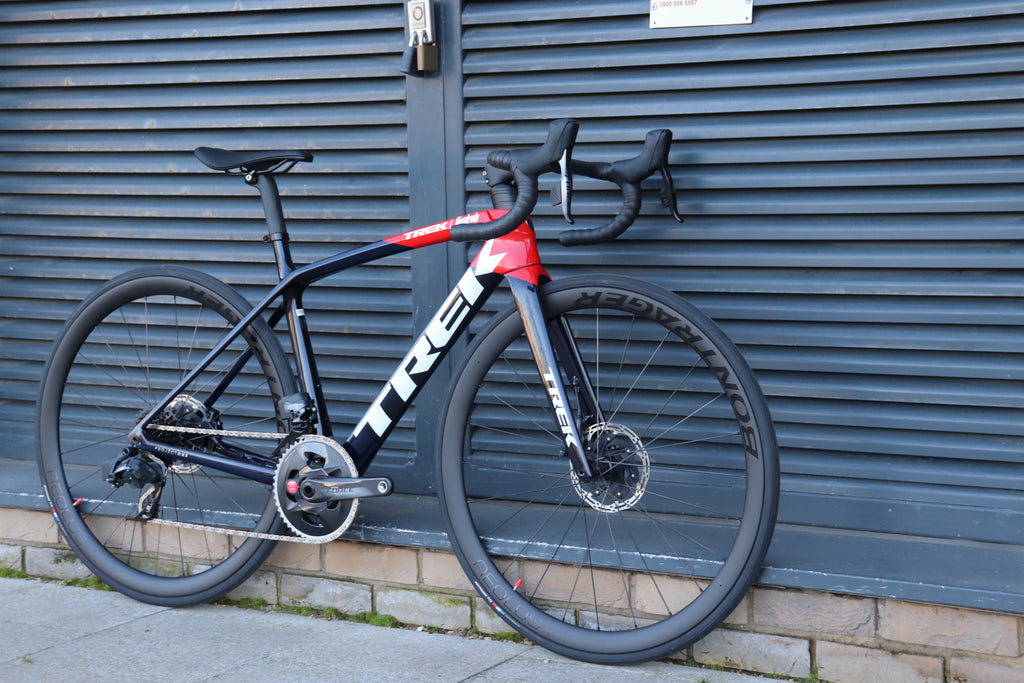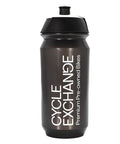Trek Bikes: A Quick History
From humble origins in a barn in Waterloo, Wisconsin, Trek have become one of the biggest bicycle brands in the world. Producing and selling over 1.6 million bikes every single year they are a dominant force in the consumer bike world.
On top of this, they're equally as dominant in the pro peloton. From the halcyon days of Lance Armstrong, to huge riders like Fabian Cancellara and now with current World champions such as Lucinda Brand and Mads Pederson, Trek have succesfully managed the line between selling lots of bikes around the world in the retail space, whilst maintaining world-leading tech with their pro-oriented level gear.
Given the size of the company they naturally produce a huge and diverse collection of bicycles across almost all disciplines. This can create quite an issue for the novice or those who don't know exactly what they want from the get go.
In this blog we're going to take a quick look at the three main offerings they have for road cycling; the Madone, Domane, and Emonda.
Madone

The Trek Madone is their aero-oriented bike where speed is the number one priority. With huge aerodynamically forged carbon tubes it cuts through the air like a hot knife through butter. These tubes create a super stiff and responsive ride that has proven to be popular over the years.
With the latest iteration, the SLR, Trek have refined the Madone even further to be one of the most accomplished bikes money can buy. Firstly, they're using Trek's brand new 800 OCLV carbon layup, rapidly reducing overall weight of the frame. Secondly, in a first for aero bikes across the whole industry, Trek have introduced their tried and tested ISO Speed decoupler system into the new Madone which allows for an adjustable level of stifffness. Essentially creating a bicycle frame that can be super stiff for the more aggressive rider, or much more comfortable for those of us who perhaps want the pro-level ride without needing to sacrifice too much.
With it being a current generation Aero bike, we obviously can't forget to mention the deep level of integration that the Madone offers. With a clever system that allows for a fully integrated handlebar and stem whilst also offering the ability to swap both the stem and handlebar around individually of each other. It sets the bar for fully integrated cockpits and introduces adjustability as a parameter to them that wasn't a priority for designers before.
Buy The Madone If:
- You're looking for a bit of bling, and to be riding the best of the best.
- You're a lover of all things aero.
- You've always wanted an aero bike but need to keep back pain and other ailments in mind.
Domane

The Domane line of bikes from Trek represents their offering to the endurance/comfort side of cycling. Despite the slightly less glamourous design brief, the Domane SLR still offers an incredibly responsive and fun ride, just one that you can maintain for a whole weekend of riding rather than a quick two hour loop.
Many people think more Paris-Roubaix than Tour De France when it comes to the Domane but it's important to note that even ex World Champion Fabian Cancellara was riding a Domane in the peloton back when he was racing. The slightly more relaxed geometry actually lends itself to a better performance on the bike as comfort negates the stress of back and neck strain.
The current generation has some great features that firmly lands the bike in the 21st century. Firstly it has the latest version of Trek's IsoSpeed decoupler system. This system, as seen in the Madone, was the first successful attempt at mass producing some form of suspension within a bike frame. It has featured in the Domane for years now and has even managed to make it's way into the aero offering, which is quite the feat. Without getting too technical, the IsoSpeed acts as a decoupler between two tubes allowing a level of movement there that acts as a form of suspsension. The benefits of this system are huge, massively reduced road buzz and compliance through the frame, without actually adding a bouncy feeling of suspension to the bike. It has proved to be and continues to be incredibly popular.
The Domane also offers plenty of other nice additions to the frame that set it apart from the rest; a storage area in the downtube, huge tyre clearance (we have actually seen these run as gravel bikes with no problem), sleek internal routing gives it a modern look/
Buy The Domane If:
- You want a bike that you can ride often and for long.
- You like a wider tyre.
- You need a more relaxed geometry.
Emonda

The Emonda's USP has always appealed to a bit of a niche corner of the market; it is incredibly light. So light in fact that it has for years been known as one of if not the lightest mass-produced bike frame available. But the little known secret of these super lightweight climbing bikes is that position and geometry wise, they actually represent a highly lucrative and profitable place for the cyclist.
Somewhere between the super-aggression of the Madone and the super-comfort of the Domane, the Emonda's geometry offers a snappy and responsive ride that won't break your back.
They're also incredibly light - scary light. We have had one in store that weighed just 4.8kg! Sure, this might not be in the reach of most people or even to their liking but their is a very simple fact to the Emonda that the others can't come close to. By being a super lightweight starting point, no matter what build you buy or do, it is going to be considerably lighter than the competition. This means that on those horrible climbs there's going to be even less weight being lugged up and thus getting the pain over with sooner.
Like most current generation aero bikes, the Emonda SLR has seen a push to slightly more aerodynamic design features. So gone have the round tubes of days gone by and in come slightly more tear dropped and aerodynamically functional tubing. There is also the addition of more integration, with internal cable routing and the ability to run a fully integrated bar and stem. But all these mod cons don't add needless weight. They help to improve an already world-class bike, which still somehow keeps that overall weight down without needing to be a bare bones frameset.
Buy The Emonda If:
- You're a weight weenie and love seeing how light a bike you can make.
- Neither an all-out aero or all-out endurance geometry is for you.





